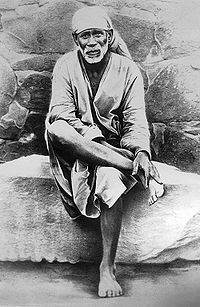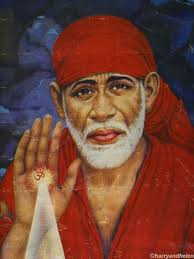
In route to Raxaul from Delhi I had the amazing opportunity to relax for a day in this amazingly well accommodated train for 26 hours. I had a top bunk, just like this one, but minus the trash. Of course there is trash, it is India. Heading to the train station is a crazy experience. Simply driving from New Delhi to Old Delhi is an experience too chaotic for words. Once you get to the train station these guys in red shirts come up to your car and offer to carry your bag. You agree to pay them ~$2 and they take off walking really fast. Now keep in mind, everyone has warned you about how dangerous the station is for getting pick-pocketed, and you are REALLY glad for that and the fact that you are carrying ~$800 in cold hard rupees in your pocket. I had my money in a secret pocket in my super cool North Face pants tucked away under the lap belt of my backpack, but you never know. After passing through a sea of people, being uncertain of how you actually got to where you are going, you finally get to a train. I met a really nice Indian guy my age and talked to him for a while. He was an engineer and spoke English, so we talked for a long time waiting for the train. Too bad he was just waiting with his mom until the train started. So the train starts moving, a bunch of people start getting off and I am left in my little block of 8 beds with a fat guy that managed to snore very loudly all night and a young couple with a baby. The baby cried a good bit at inopportune times, but honestly it wasn't that bad. So you get moving about 530 and the first thing you realize is that there is NOTHING fast about this train. Somehow in my mind we were gonna be going like 100 mph and trucking across the Indian countryside. Turns out, this trip is 960 miles and takes 26 hours.

While on the train, one of the things I did was listen to an NT Wright (NTW) talk that I found on iTunes U from Fuller Seminary entitled “Learning the Language of Life: New Creation and Christian Virtue.” Regardless of what you think about NTW, like our beloved JD Greear says “When Wright is right, he’s right.” I feel like this talk was one instance of NT Wright being very right and something that I rarely really sit and ponder. NTW begins with recounting the story of the famed USAirways flight deemed the “Miracle on the Hudson.” In some ways, it was an absolute miracle that 1000 things came together for those two pilots and hundreds of passengers bound for our beloved Charlotte, NC, but calling it a miracle points out something very interesting about our society. This is a part where the simplicity of what NTW says always comes across as brilliant to me. He said that what was the real miracle that happened was the “power of acquired habits.” In some ways, yes it was an incredible thing, but it also was the culmination of 1000s of hours of flying, dedication, and prepared execution that went precisely as planned to create a desired outcome.
NTW penetrated my own heart when he said “Our culture prefers effortless spontaneity with occasional divine intervention, rather than working with God while developing the muscles which will meet those emergencies with a God-given second nature that appears to be spontaneous but is in fact the result of thinking, choosing, and practicing.” I was blown away by this statement and felt it as a strong indictment even on my own life. How often in our prayers to we feel like we are doing something really good when we pray for God to do his work? Take notice of it next time you pray, or listen to someone else. We water down our responsibility in this whole process by opening up a bible study praying “God just let your words be spoken here” or by praying in the morning “God please make me humble today.”
You see, what actually got those pilots down safely into the Hudson River was restraint, fortitude, coolness under pressure, and concern to do the right thing. That is what ancient philosophers termed the Cardinal Virtues: Courage, Temperance, Prudence, and Justice. I had to think really hard and examine myself to see if I felt that I lived up to this. Before you go thinking that I or NTW is proposing that you read Aristotle and talk like Commedous from Gladiator you are wrong.
These virtues are precisely what we are called to in the gospel, living as people of God’s New Creation. NTW said, “The grace that meets us where we are is not content to leave us where we are.” Faith, hope, and love regenerate and sustain these four cardinal virtues. Simply learning the language of life, of walking as we are truly called, is like learning a new language. In the beginning we have to put real work into learning the grammar and the syntax because we aren’t fluent yet. I think this is a real problem that is plaguing the men of my generation. Even Christian guys would rather pray for some thing to happen and then throw the ball in God’s court. If you pray for God to save your friend you wait for the Spirit to rush rather than to open your mouth. It is much easier to neglect doing the real hard work of being a man worth marrying while you are praying for God to “just bring you Mrs. Right.” We should probably all pick jobs that are safe and nice and easy for us to succeed in rather than doing the real hard work of living a life that requires courage, temperance, prudence, and justice.
For me, driving to a remote part of India, this was incredibly convicting. What I have found here at Duncan is a group of doctors committed to excellence despite working in desperate conditions. That excellence is because people deserve it, no matter their color, race, or creed. For me, this is easily applicable to medicine, but the truth is, every aspect of our life and culture is crying out for men and women who work diligently to develop the second nature, empowered by the Spirit, but brought about by when time and time again our old nature is wrestled to the ground and our redeemed nature is able to become evident. There is a saying in medical school: “Proper preparation prevents piss-poor performance.” I hope that you can be encouraged to press into the Lord, not out of effortless spontaneity but by taking hold of life, and learning to speak the language of new life.
















